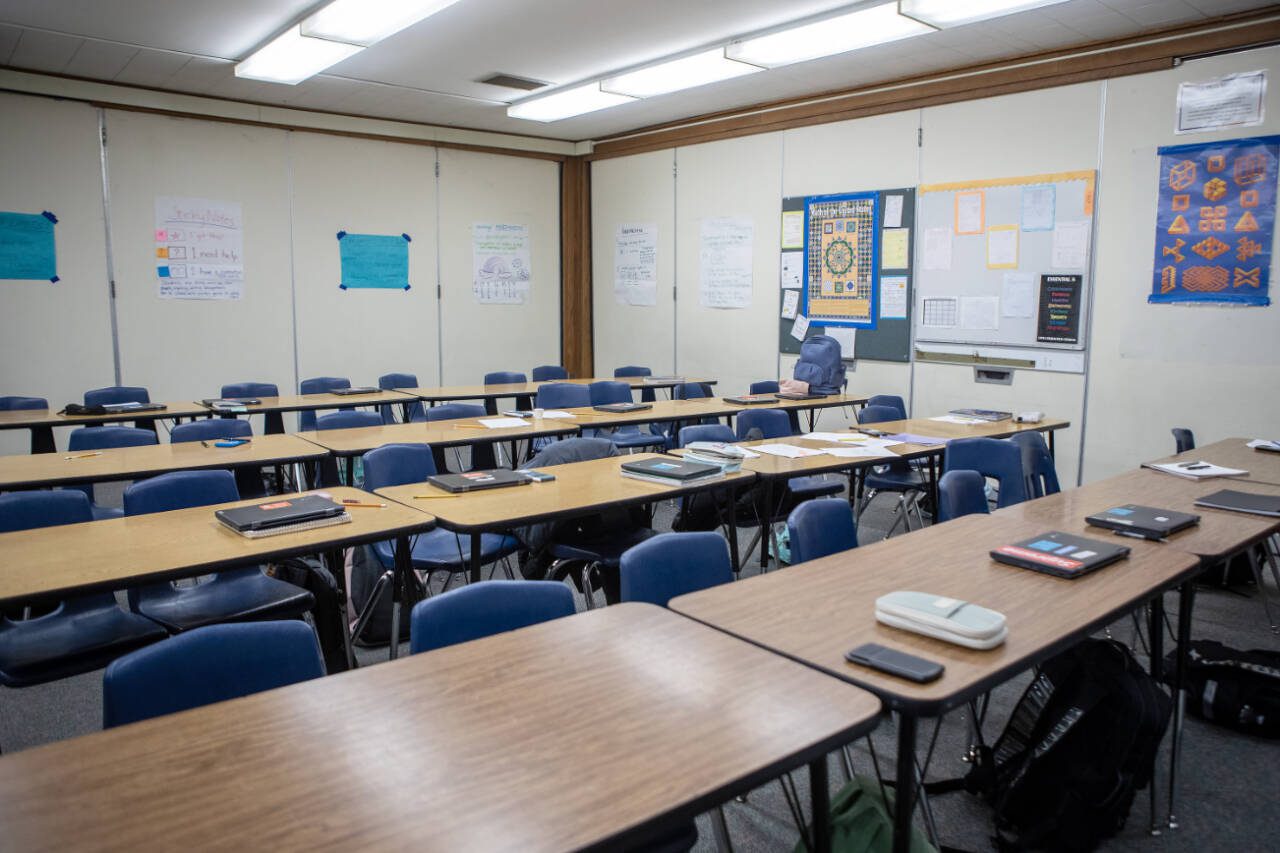Washington’s K-12 education system slipped slightly in national rankings released Monday.
The state ranks 27th, down one spot from last year, according to an analysis from the Annie E. Casey Foundation. Ten years ago, Washington was 20th.
Superintendent of Public Instruction Chris Reykdal’s office took issue with the rankings, arguing that the National Assessment of Educational Progress data the report is based on shouldn’t be used to construct such lists.
More than two-thirds of the state’s 4th graders failed to meet reading standards, and 70% of 8th graders weren’t proficient in math last year, right around the national average — and where Washington pupils stood in 2022.
For two decades, reading proficiency has remained largely unchanged in Washington. In 2005, 64% of the state’s 4th graders failed to meet reading standards. The number improved, falling to just 60% in 2013 and 2015, but last year climbed to a new high of 68%.
Math proficiency among 8th graders dropped over the past decade, from 58% not meeting standards in 2013, to 70% last year, largely driven by the COVID-19 pandemic and its toll on student learning and a rise in chronic absenteeism nationally.
A spokesperson for Reykdal pointed to state data showing “robust” improvement since the pandemic. The percentage of students on track in reading and math was up in the 2023-24 school year from the pandemic era, according to state data.
“Our performance in reading is strong, and OSPI and Superintendent Reykdal understand the need for increased focus on and funding for mathematics, particularly in late elementary and middle school,” spokesperson Katie Hannig said in an email Monday. “This is one of the Superintendent’s top priorities moving forward.”
One worrisome data point shows Washington’s youngest learners are missing out on school. Of 3- and 4-year-old children, 57% weren’t enrolled in school from 2019 to 2023, slightly worse than the national average.
Stephan Blanford, executive director of the Children’s Alliance based in Seattle, said this lays the groundwork for below-average on-time graduation rates. The alliance is the foundation’s partner in Washington on the report known as the Kids Count Data Book.
Sixteen percent of Washington students didn’t graduate on time in 2021 and 2022, the report says, below the 13% national average.
“The fact that our state has made such significant cuts in early education as a result of the last legislative session means it’s pretty easy to predict that these numbers are on the way downward,” said Blanford, speaking broadly about education trends. “There was so much work that was done in order to get them to their current level.”
“Our slide is going to be precipitous,” he added.
State lawmakers agreed this year to delay previously approved expansions to state-paid early learning in the face of a hefty budget shortfall. And the Trump administration has put the federal Head Start early learning program for low-income families in its crosshairs.
These programs help students learn to manage their feelings, and kids who participate are more likely to go on to college and earn more money as adults.
Blanford voiced disappointment that state leaders, particularly Gov. Bob Ferguson, couldn’t reach agreement this year on new revenue options to better fund education.
Ferguson’s office didn’t respond to a request for comment Monday.
Meanwhile, school districts are grappling with tough budget decisions of their own as federal aid provided during the pandemic has dried up, and as enrollment is down in many places. State funding is linked to student headcounts.
Hannig, from the Office of Superintendent of Public Instruction, said the state budget cuts “cause OSPI concern, and we are exploring options to keep our preschool-age learners learning, despite these reductions in funding.”
Still, she noted state data shows 53.6% of Washington’s students entered kindergarten ready this school year, a figure that has risen consistently in recent years.
The Kids Count Data Book also tracks family, health and economic data trends. For example, in 2023, just 3% of Washington children lacked health insurance, better than the national average of 5%. And only 12% were impoverished, also better than the average.
As for child well-being, Washington ranks 16th, down from 14th last year.
The state’s Healthy Youth Survey, however, has indicated improving mental health and decreased substance use among Washington’s young people in recent years.
Talk to us
> Give us your news tips.
> Send us a letter to the editor.
> More Herald contact information.

























